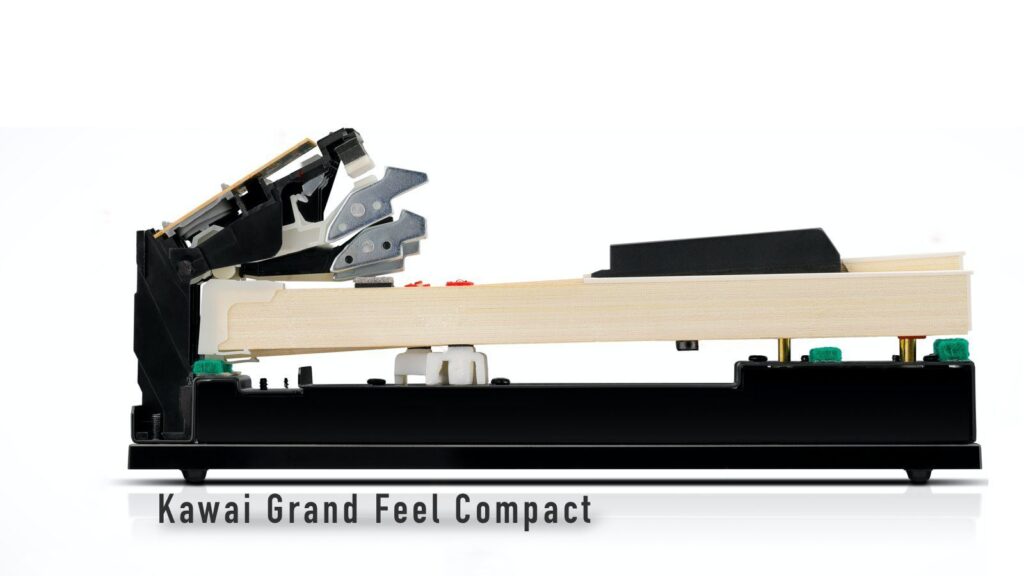New audio system
While an ONKYO system generated the sound of the previous model, Kawai has ended its cooperation with the Hi-fi equipment expert and developed its own playback system.
Here, too, there is noticeable progress. The audio system produces a beautiful and well-rounded sound, which you might not expect considering the cabinet size. Overall, the sound has a higher resolution than the previous model, with the manufacturer pointing to an improved power supply that ensures a more precise sound reproduction.
Tip: If you test the Kawai CA-401 yourself in a music store, definitely look at the function menu and search for the “Tone Control” function. The instrument usually powers up the speaker system in a neutral setting, however, the sound of a digital piano actually depends on where and how it is set up. Use the Tone Control function to adjust the overall sound of the CA-401, for example, to add brilliance, or to boost and cut the bass.
If you want to play quietly with a full sound, that’s what the Low Volume Balance function is for. The more you use the function, the more it emphasizes softly played notes. This makes it possible to play a pianissimo at a low volume.






